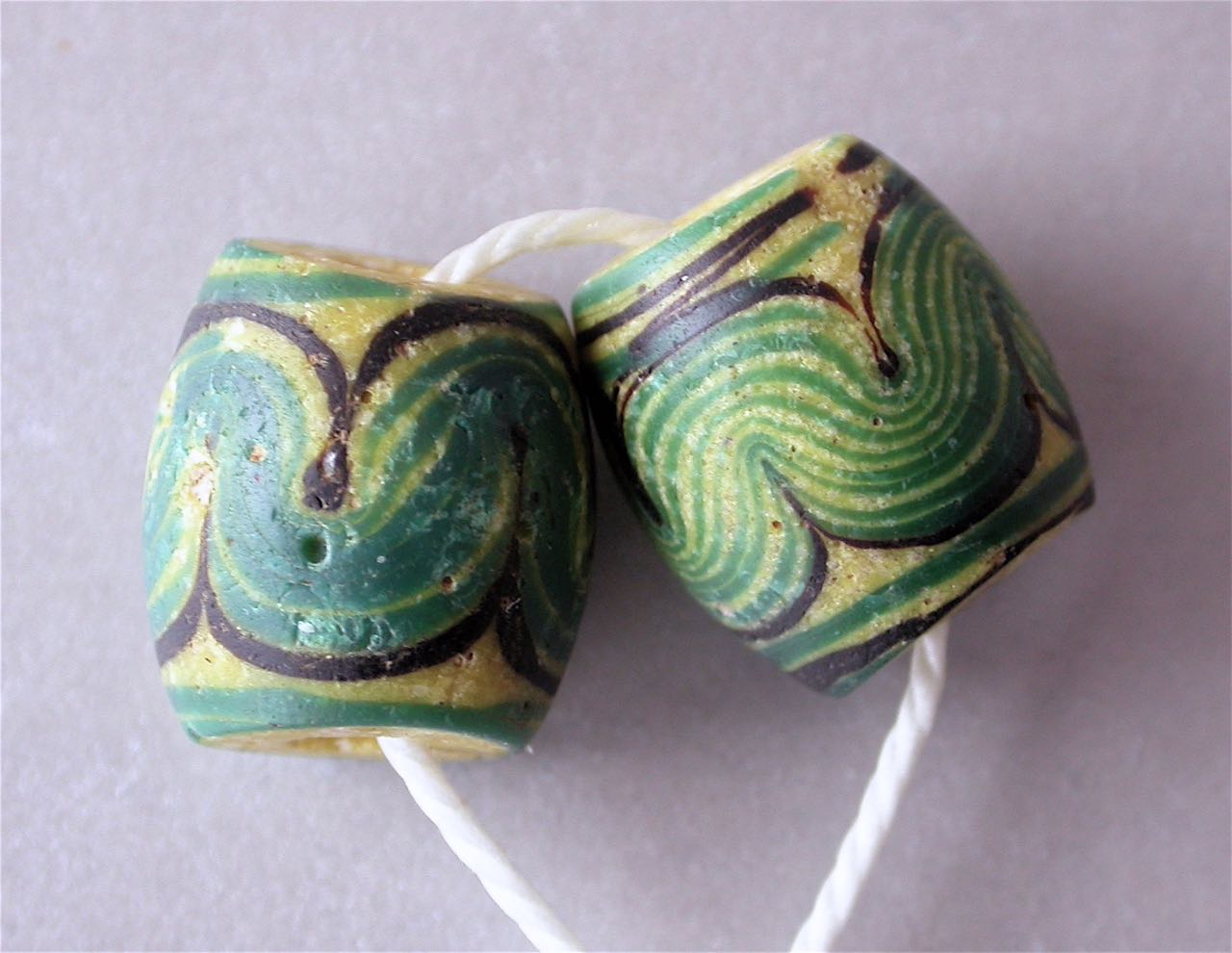| Beads from Yunnan | |||||
| Re: Unusual Glass bead from Yunan Province China -- Chung | Post Reply | Edit | Forum | Where am I? | |
06/12/2015, 22:33:37
These are very interesting beads; thanks for showing them. First of all, do you have any more information about them - i.e. where and in what conditions they were found; graves, reliquaries, etc? I'll attach a photo of a couple of related beads that were a gift from a generous friend who also posts occasionally on this forum. She knows more about them than I, and perhaps (nudge, nudge!) will tell us what she thinks.
These Yunnan beads pose a number of questions; I don’t have any answers but I have been trying to form a cultural picture around them, which is what I try to do with any artefact that interests me. One of the problems is that there seems to be very little information available with regard to where exactly they were found or in what context (other burial items, ashes, skeletons, etc) that might help with dating.
When they appeared on the market ten years or so ago they were said to be Tang (618-907), or even loosely ancient. When I first saw them that seemed unlikely to me, primarily for historical reasons. In Tang times, Yunnan, which had been absorbed with great difficulty into China during the Han period, broke away completely, becoming for several hundred years the centre of the very large, powerful and aggressive kingdom of Nanzhao, which successfully conquered substantial parts of Tibet, Sichuan (including the capital Chengdu), southern China and Vietnam. As a result, Yunnan was cut off from China more completely than it had been at any time since the Dian kingdom and consequently from the lively cosmopolitan culture that flourished under the Tang empire. This doesn’t mean that beads could not still have been brought in from elsewhere (as we all know, they travel light and far), but it seemed to me to make that early dating unlikely.
For similar historical reasons, a Yuan (i.e. Mongol) dynasty dating made much more sense, since it was in 1253 that the armies of Kublai Khan, which had conquered China, invaded Yunnan and incorporated it into their empire. The last area to hold out against them was in the west and northwest where the Dali kingdom, a very interesting Buddhist culture which had taken over from Nanzhao, was located. That is where these beads, according to Robert Liu, are reported to have been found. Now at that time, in the second half of the thirteenth century, a brutally oppressive rule was imposed on the indigenous Yunnanese, particularly in the west, and, as part of the pacification process, large numbers of Moslem mercenaries and settlers from other parts of the Mongol empire in Central Asia were brought in and rewarded for their service with land that was stolen from the local communities (a kind of ethnic cleansing, similar, for example, to English tactics in Ireland in the eighteenth century, and to those of far too many governments in our world today). (Ironically, these Moslem settlers were themselves displaced by subsequent waves of Han Chinese settlers and had “their” land stolen, which resulted in widespread rebellions in the nineteenth century and even the establishment of a separatist Islamic state. In their turn, they were brutally suppressed and slaughtered in tens of thousands by the Qing authorities.)
Anyway, the point of all this is simply to show that there was a substantial potential market for such beads, with their obvious Islamic influence, among a newly prosperous class of resettled mercenaries in the west of Yunnan during the Yuan dynasty.
But that doesn’t help with the other main questions with regard to where the beads were made, and what is their relation to the Paiwan beads from Taiwan (see the lovely old photo of a Paiwan woman) which are very similar in technique, but tubular rather than barrel shaped (or almost spherical as with your example). In Asia’s Maritime Bead Trade Peter Francis argues that the most likely place for Paiwan beads to have been manufactured was Quanzhou, the port city in Fujian province on the Chinese coast opposite Taiwan. I don't think he makes a very strong case for that location, but I don't have any clear alternative. However, the similar bead you show from the North of China raises interesting speculations about the possibility of the beads having been made as an offshoot of one of the new sites for glass manufacturing that were emerging there in the Jin and Yuan dynasties.
All the best,
Will

